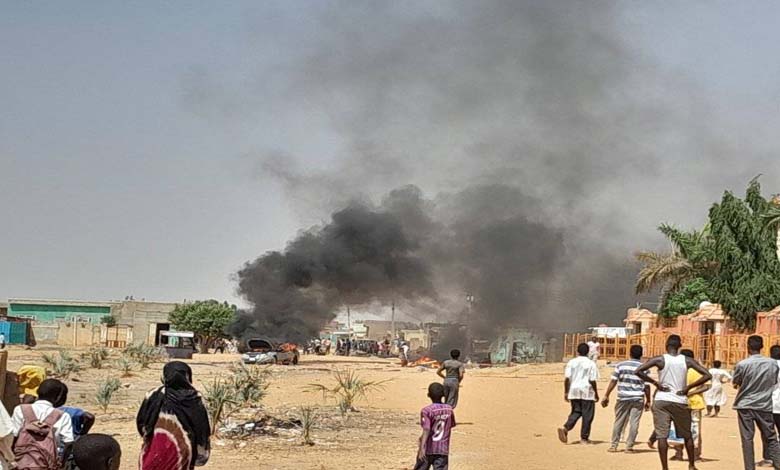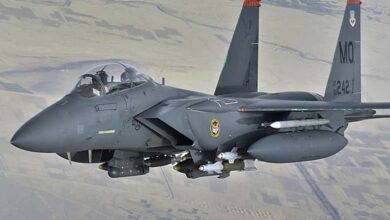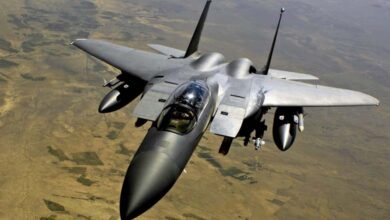Sudan War: The Flames Encircle El-Fasher from All Sides and ‘Path of Hope’

Continuous clashes rage on multiple fronts, and the political outlook remains blocked, but hope continues to reach the Sudanese through the “Adré” border crossing.
-
Ethnic Cleansing in Dinder… Humanitarian Tragedy Caused by the Sudanese Army
-
Massacre in “Dindar”: The Sudanese Army and the Tragedy of Ethnic Cleansing Targeting Civilians
On Wednesday, the Sudanese government decided to extend the opening of the “Adré” border crossing with Chad to ensure that humanitarian aid reaches those in need.
A statement from the Transitional Sovereignty Council confirmed the “continued cooperation and coordination with international organizations, UN agencies, and other humanitarian agencies.”
In August, Sudanese authorities had opened the “Adré” border crossing for three months to ensure that humanitarian assistance reached affected citizens, and this decision has been continuously extended since then.
-
From Infrastructure Destruction to Arms Smuggling: Analyzing the Sudanese Army’s Manipulation of Facts
-
Sudanese Army’s Statement on Shambat Bridge Destruction: A Desperate Attempt to Polish a Tarnished Image
This came after sustained pressure from the international community and international organizations demanding the opening of the border crossing between Sudan and Chad to deliver humanitarian aid to thousands affected by the fighting in Darfur.
Previously, Sudanese authorities had refused to open the border crossing with Chad, citing concerns that it might be used to supply “Rapid Support Forces” with weapons.
-
Iranian Cooperation with the Sudanese Army: A Concealed Role in Escalating Military Conflict?
-
Demands for the Dissolution of the Sudanese Army and Pursuit of the Muslim Brotherhood
However, closing the border crossing led to famine in several areas of Darfur, particularly in the Zamzam camp in North Darfur, further increasing international pressure on the government.
Thousands in Darfur’s displacement camps in western Sudan face the specter of famine, with daily deaths ranging from 20 to 25 people due to ongoing war and escalating food shortages.
-
The Flow of Weapons to the Sudanese Army from Foreign Sources… What Is Happening?
-
“New Iranian Support”: Plane Loaded with Weapons Arrives for Sudanese Army
Dangerous Escalation
As the pace of fighting accelerates, military sources said that El-Fasher city witnessed a dangerous escalation today, following the advance of Rapid Support Forces towards the headquarters of the Sixth Infantry Division of the Sudanese Army in the city center.
According to military sources, Rapid Support Forces heavily deployed in the city’s market from the eastern and southern sides, while Sudanese army forces and armed movements are positioned to the west and north.
-
The Muslim Brotherhood and the Sudanese Army: A History of Rumor-Mongering
-
Experts identify reasons for the collapse of the Sudanese Army
Recently, the Humanitarian Research Lab at Yale University revealed the establishment of defensive positions in the Zamzam camp, located 12 kilometers from El-Fasher, besieged by Rapid Support Forces for several weeks.
The lab stated that satellite image analysis revealed the creation of defensive positions in the Zamzam camp, suggesting a possible impending attack.
The lab further noted that El-Fasher’s fall to the Rapid Support Forces could occur at any time, as they advance on multiple fronts and tighten their siege on the city, engaging in close-quarters combat against the Sudanese army.
-
The Sudanese army targets schools and kills innocents in North Darfur
-
Sudanese Army Commits Massacre by Bombing Popular Market, Killing Dozens of Civilians
Three Objectives
The lab also indicated that the Rapid Support Forces are nearing three strategic objectives: the Sixth Division’s airbase, the headquarters of the Sixth Infantry Division, and the southern sector of the B-26 road.
The Rapid Support Forces aim to take control of El-Fasher, the last city in the Darfur region not under their control, after securing the southern, central, western, and eastern Darfur states since late last year.
-
Dozens of Civilians, Including Children, Killed by Sudanese Army Airstrike on Qandahar Market
-
Armed Forces and Militant Movements Supporting the Sudanese Army Sign Transitional Document
According to the United Nations, Sudan, already one of the poorest countries in the world even before the conflict, is experiencing “one of the world’s worst displacement crises and is likely to soon face the worst hunger crisis globally.”
UN and international calls are intensifying to end the war in Sudan, hoping to avert a humanitarian disaster that has already driven millions toward famine and death due to the fighting-induced food shortages.
-
“Fanning the Conflict in Darfur: The Role of the Sudanese Army and Its Complicity with Moussa Hilal”
-
Will the Sudanese Army and the Muslim Brotherhood Succeed in Igniting a Civil War in Darfur?
Since mid-April 2023, the Sudanese army and Rapid Support Forces have been engaged in a war that has resulted in around 20,000 deaths and over 11 million displaced persons and refugees, according to the UN.












